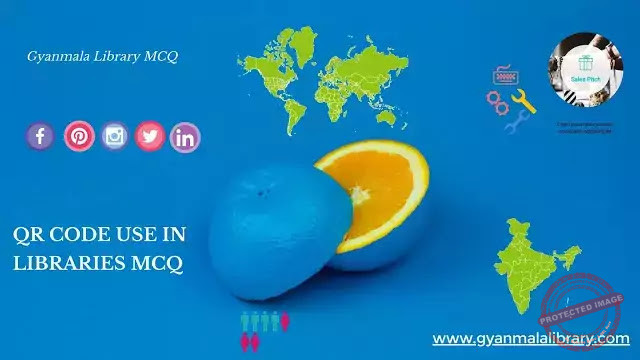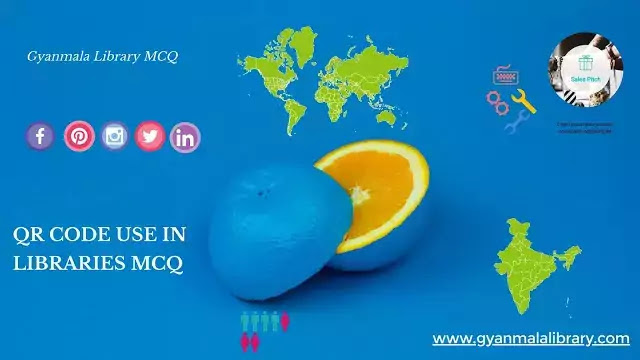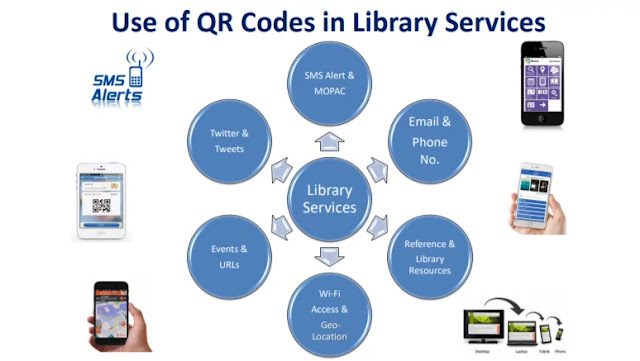QR CODE USE IN LIBRARIES AND AUTOMATION Proven 9
A QR code (“quick response” code) is a type of bar code that contains a matrix of dot
• The QR (Quick Response) code is a type of 2D barcode.
• It can be decoded at high speed and from any direction or any position detection patterns
Types of QR CODE USE IN LIBRARIES
There are five different types of QR CODE: QR Code model 1 and model 2, Micro QR Code, IQR code, SQRC code, and Frame QR Code:
• QR Code Model one and Model two are the typical types of QR codes that are considered as the main structure of QR code for other types.
• Micro QR Code is a type of QR code that has the main feature as one position detection pattern and it has a reduced size of printing.
• IQR Code is QR code which is present in both square and rectangular shape so that it can easily be printed on cylindrical products too. It stores more data in less space as compared to the regular ones.
• SQRC is full-formed as Secure Quick Response Code hence it provides security to encoded data by providing reading restriction to it.
• Frame QR codes are the QR code that has a canvas area for providing different shapes to QR code and making it more attractive to users and customers.
Static QR CODE USE IN LIBRARIES
- Once this type of code is generated then, we can’t change the code again.
- one time job
Dynamic QR CODE USE IN LIBRARIES
- Editable
- We can change the information according to the change of time and need
How to Read a QR CODE?
- Mobile Smart Phone
- Mobile Camera
- QR Reader App
- Point the Camera on the QR code
- Read/Browse the Content
The Change Agents
• QR code is a convenient way to add the virtual to the physical and capable to store a variety of information: Text, Hyperlinks, Phone numbers, SMS/MMS messages, Email addresses, Maps, Calendar Information in any direction that is horizontally and vertically.
• Mobile Tagging is one of the trends on the mobile front.
• It is a process that allows users to access digital content on their mobile devices via an encoded object.
• Libraries are implementing QR codes in both their physical and online libraries.
Benefits of QR CODE USE IN LIBRARIES
• It’s fast
• Store a huge amount of data
• Use anywhere
• No specific skill is required
• No additional technology is required
• Use the information later
• Anyone can generate it
• Increased customer satisfaction
• Environment friendly & Saves the paper
Generate QR CODE for…
Website URL YouTube Video Image File PDF File Google Maps Location Twitter Facebook LinkedIn Instagram Event (VCALENDAR) Wifi Login Paypal Buy Now Link | App Store Download iTunes Link Dropbox Plain Text Telephone Number Skype Call SMS Message Email Address Email Message Contact Details Digital Business Card Attendance Tracking |
Many more…
QR CODE USE IN LIBRARIES
• Library Audio Tour
• Group study room scheduler
• Marketing/ Promotional materials
• Linking from print to electronic Journal Holdings
• Providing an electronic alternative to physical books
• Promoting online audio-visual materials
• Embedding video help
• Bringing external resources into the library
• Finding appropriate help
• Taking the catalog record with you
• Seat Reservation
• Wi-Fi proper utilization
QR CODE Applications in Libraries Examples
Scan the QR Code for our Library Contact
Scan the QR Code for our Library Website
Multi URLs
Library SMS Notifications
Scan the QR Code to our Facebook page
Scan the QR Code for @Twitter
Scan the QR Code to Watch our YouTube
SMS Reference: Ask-a-Librarian SMS service is offering mobile patrons the ability to text their questions to the Librarian.
Mobile Number
Web OPAC……..many more…
Scan to mail
Digital Reference Service
•Digital library professionals set up a QR code based digital reference service platform to provide the fast and smooth library services on users’ mobile smartphones.
•In a digital environment, it is very popular and beneficial to the users
Print Journals/Articles with QR Code
• Publisher prints a QR code on the journal and on every article which is included in it.
• User can scan the QR code and directly go to the same journal website where the user can view/read issues/articles in full text.
Steps for creating QR code
Get a QR code generator.
• Select data to encode.
• Type or paste in the data requested by the generator.
• Generate the QR code.
QR CODE Generators
• BeeTagg (www.beetagg.com);
• Google QR Code Generator (chrome.google.com/webstore/detail/qr-codegenerator/)
• I-nigma (www.i-nigma.com)
• Kaywa (http://qrcode.kaywa.com/ )
• QRCode Pro (www.qrcodepro.com)
• Neoreader (www.neoreader.com)
• Nokia Barcode Reader (mobilecodes.nokia.com/)
• RedLaser (redlaser.com)
• Snapmaze (http://mobile.snapmaze.com/jar)
• Scanlife (www.getscanlife.com)
Benefits of QR CODE Applications to Library Service
- User Friendly —–Personalized Service
- Ability to Access Information —–Time Saving
- User Participation —–Location Awareness —-Limitless Access
Conclusion
QR CODE
• Another vehicle for code based information
• Bridge from physical to the digital world.
Library
• Libraries in Hand trend
• Access the library resources with simple a scan of a code
• Increase ROI both Print and online collection
Services
• One Scan away for exponential Information.
• Open the door for information on the go
Reference
• Madhusudhan, M.and Saleeq Ahmad Dar ” Mobile Information Services and Initiatives in University Libraries: A New Way of Delivering Information.”DESIDOC Journal of Library & Information Technology 37.2(2017):109-118.
• Saleeq Ahmad Dar and Madhusudhan, M. “Quick Response Codes in University Libraries: User Expectations for Fast Retrieval of Information at the University of Delhi “Journal of Knowledge & Communication Management 6.2 (2016):114-127.
• Madhusudhan ,Margam,QR Code and Useful Applications in Libraries. ETTLIS Retrievel From https://onlinecourses.swayam2.ac.in/arp19_ap78/unit?unit=61&lesson=64


